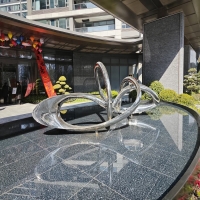Welcome to the website for landscape facilities products and knowledge.
How does the table handle wind resistance in open outdoor spaces?
When enjoying a meal or conversation in open outdoor spaces, few things disrupt the experience more dramatically than a gust of wind sending tablecloths flying or threatening to topple the entire table. Modern outdoor tables employ sophisticated engineering principles to maintain stability against nature's forces.
The most fundamental defense begins with mass and center of gravity. Heavy-duty tables feature substantial bases, often filled with sand, concrete, or other ballast materials that lower the center of gravity. This creates a pendulum effect, making the table far more resistant to tipping than a lightweight alternative.
Material selection plays a crucial role. While solid surfaces act as sails catching wind, innovative designs incorporate strategic perforations. These patterned holes or slats allow air to pass through the table surface rather than pushing against it, reducing lateral force by up to 60% according to wind tunnel studies. The arrangement and size of these perforations are carefully calculated to balance structural integrity with wind permeability.
Table legs and frames have evolved beyond simple aesthetics. Aerodynamic profiling shapes legs to slice through wind currents rather than presenting flat surfaces. Some premium designs feature slightly angled legs that direct wind downward, effectively using the air pressure to increase the table's downward force on the ground.
For permanent installations, advanced anchoring systems provide invisible stability. Ground-fixed models may include center-pole designs that transfer wind loads directly into the foundation, while portable options often feature wide-span bases that distribute weight over a larger area. The geometry of these bases creates a stabilizing moment that counters tipping forces.
Surface texture contributes unexpectedly to wind resistance. Slightly roughened table tops create boundary layer turbulence that disrupts laminar wind flow, reducing the suction forces that can lift lightweight objects from the table. This micro-texturing is often incorporated during the manufacturing process through specialized finishing techniques.
Understanding these design elements reveals why some tables remain steadfast while others falter in windy conditions. From weighted bases to aerodynamic profiling, today's outdoor tables represent a sophisticated marriage of furniture design and mechanical engineering, allowing us to dine comfortably even when the breeze decides to join the conversation.
Related search:

Recommendation
Abstract art sculpture, stainless steel metal sculpture, large-scale water feature sculpture